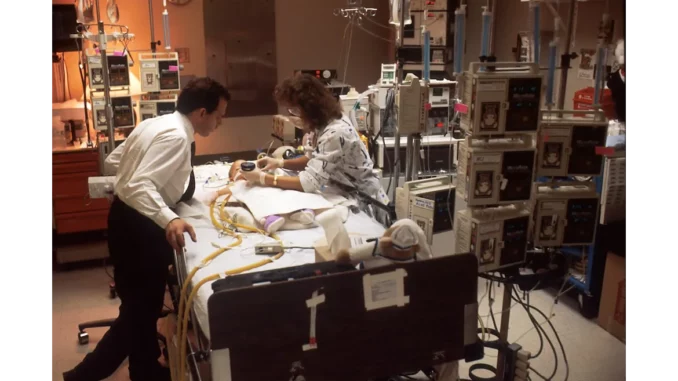
In a rapidly evolving world where the effectiveness of medical practices is continually scrutinised, the advent of Artificial Intelligence (AI) as a transformative tool for enhancing healthcare delivery is both timely and intriguing. Recently, I had the privilege of conversing with Dr Emily Harrington, an esteemed expert in paediatric care, to delve into the pioneering application of large language models (LLMs) in evaluating the quality of primary care for children prescribed medication for attention deficit hyperactivity disorder (ADHD).
Dr Harrington’s insights into paediatric care are held in high regard, and she shared her reflections on a recent study that harnessed the open-source LLaMA model to analyse clinical notes. Published in the journal Pediatrics, the study investigated how these models could measure care quality and identify areas in need of enhancement. “Traditional methods, such as chart reviews, are not only laborious but also impractical for real-time improvements,” Dr Harrington commenced, her tone underscoring both the challenges and potential of existing practices. “The notion that an AI model could meticulously sift through clinical notes and highlight crucial details is revolutionary.”
The study meticulously examined the medical records of 1,201 children, aged six to eleven, across eleven paediatric primary care practices. Each child had been diagnosed with ADHD and received at least two prescriptions for ADHD medication. The primary focus was on the monitoring of side effects—a vital aspect of ADHD treatment that ensures the safety and well-being of young patients. “Monitoring side effects is essential,” Dr Harrington emphasised. “It appears that LLMs like LLaMA are particularly proficient at pinpointing notes where side effects were documented, with notable accuracy.” The model demonstrated a sensitivity of 87.2% and specificity of 86.3%, which are commendable metrics for such an innovative application in healthcare.
A particularly intriguing aspect of the study was the disparity in documentation practices between in-person and telephone encounters. “It was surprising to observe that documented inquiries into side effects were significantly less prevalent during phone calls compared to clinic visits or telehealth consultations,” Dr Harrington noted. The figures—51.9% for phone encounters versus 73.0% in other settings—underscore a potential gap in care, one that AI could help bridge. Dr Harrington also highlighted the variation in practice across different primary care providers (PCPs). “In some practices, over half of the ADHD consultations were conducted over the phone, yet only a few consistently documented side effect inquiries,” she explained. This inconsistency suggests a fertile ground for improvement, with AI tools potentially prompting clinicians during phone consultations to ensure comprehensive care.
The study’s deployment test, involving over 15,000 notes from nearly 1,200 patients, further underscored the robustness of the LLaMA model. “What stands out is the model’s ability to operate without bias concerning sex or insurance status,” Dr Harrington remarked. “This neutrality is vital, as it ensures equitable care across different patient demographics.” Another point of interest was the difference in side effect documentation between stimulant and nonstimulant prescriptions. “Clinicians seemed more at ease managing stimulant medications,” she observed. “This could be due to a longer history of use and more established guidelines, whereas nonstimulants might still be perceived as more challenging.”
As our conversation drew to a close, Dr Harrington shared her reflections on the broader implications of the study. “This is merely the beginning,” she said, her enthusiasm evident. “The potential of LLMs in healthcare is vast. They have the capability to streamline processes, ensure adherence to guidelines, and ultimately enhance patient outcomes. It’s an exhilarating time for medicine.” The integration of AI into healthcare extends beyond technology—it is about enhancing the quality of care and improving the experiences of both patients and clinicians. Dr Harrington’s insights offer a glimpse into a future where AI does not replace doctors but instead empowers them to deliver more efficient and effective care.
For those in the medical field, the study presents a compelling case for embracing AI as a collaborative partner in enhancing patient care. For parents of children with ADHD, it signifies a future where treatment is not only more precise but also more thoroughly monitored, ensuring the best possible outcomes for their children. The promise of AI in healthcare is not just about innovation; it is about real-world improvements that can make a tangible difference in the lives of patients and those who care for them.


Be the first to comment